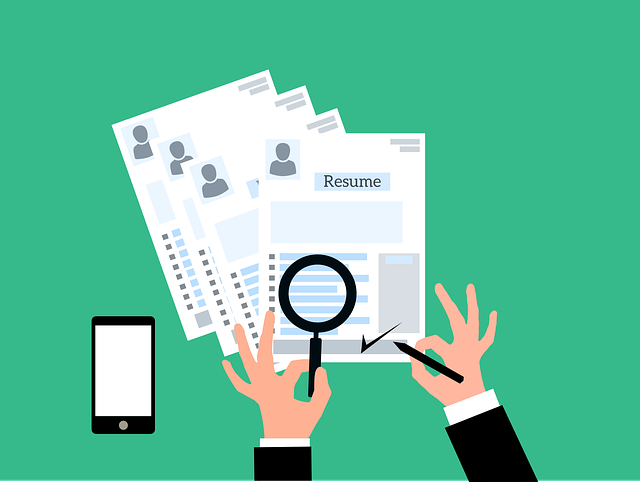Follow Me
Posted on December 30, 2024
Estimated Time Required :5 Minutes
Posted By EduTechRR Tips👤
1. Understanding the Purpose of a Resume
A resume's main goal is to get you an interview. It serves as a marketing document that summarizes your professional history, skills, and achievements. It acts as an initial introduction to hiring managers, recruiters, or HR professionals. They will decide whether to move forward with your application based on how clearly and effectively your resume communicates your qualifications.

2. Types of Resumes
There are several formats for resumes, each serving different purposes and career stages:a. Chronological Resume
👉Best for: Job seekers with a solid and consistent work history.👉Structure: Lists work experience in reverse chronological order (most recent job first).
👉 Ideal for: Those with a stable work history or a clear career progression in a particular field.
b. Functional (Skills-based) Resume
👉Best for: Individuals changing careers, recent graduates, or those with gaps in employment.👉Structure: Focuses more on skills and experience rather than job history.
👉Ideal for: Highlighting transferable skills or accomplishments.
c. Combination (Hybrid) Resume
👉Best for: Those who want to emphasize both skills and experience.👉Structure: Combines elements of the chronological and functional resumes. It typically starts with a section highlighting skills and achievements followed by a detailed work history.
👉Ideal for: Job seekers with a diverse skill set or those looking to shift to a different role but still leverage past experience.

3. Essential Sections of a Resume
Here’s an overview of the most common sections you should include:a. Header (Contact Information)
Your header should provide your name, phone number, email, and LinkedIn (or other relevant social media) profiles. For example:👉Full Name
👉Phone Number
👉Email Address(Use a professional email address, ideally edutechrr@example.com)
👉LinkedIn URL (Optional, but highly recommended)
👉Portfolio or Personal Website (Optional, for roles like design, writing, etc.)
b. Resume Summary or Objective
👉Summary: A brief paragraph (3–4 sentences) at the beginning of your resume that outlines your experience, skills, and what you're seeking. It’s ideal for those with significant experience.👉Objective: A short statement focusing on your career goals and what you’re looking for in a job. It's better suited for entry-level candidates or those changing careers.
👉Example of Summary: "Results-driven marketing professional with 5+ years of experience in digital marketing, brand management, and content creation. Proven track record in boosting web traffic by 40% through innovative SEO strategies and social media campaigns. Seeking to leverage skills in a growth-oriented marketing role."
c. Skills
List hard and soft skills relevant to the job you're applying for. Be specific and prioritize skills that match the job description. Break them down into categories if necessary (e.g., technical skills, communication, leadership).Example:
👉Technical Skills: Adobe Creative Suite, Google Analytics, HTML/CSS
👉Soft Skills: Communication, Teamwork, Problem-solving
d. Professional Experience
This section should list your past work experiences in reverse chronological order. For each job, include the following:👉Job Title
👉Company Name
👉Location (City, State)
👉Dates of Employment (Month/Year)
👉Key Responsibilities & Achievements (Use bullet points to describe your key duties and accomplishments)
e. Education
Include details of your highest level of education. You may list additional certifications, training, or relevant coursework.👉Degree Name (e.g., Bachelor of Arts in Marketing)
👉Institution Name
👉Location
👉Graduation Date (or expected graduation date)
👉If you have relevant coursework or honors, you can list them here as well.
f. Certifications and Licenses
If you have industry-specific certifications or licenses, make sure to include them here. For example:👉Google Analytics Certification
👉Certified ScrumMaster (CSM)
👉CPA (Certified Public Accountant)
g. Volunteer Experience (Optional)
👉If you have relevant volunteer experience, especially if it’s tied to your career goals, include it. It’s a great way to demonstrate transferable skills or leadership outside of paid work.

4. Writing Tips for a Strong Resume
👉Tailor Your Resume:Customize your resume for each job application. Adjust your skills, achievements, and experience to match the job description and employer’s needs.
👉Action Verbs: Use strong action verbs (e.g., "led," "created," "developed," "managed") to make your responsibilities sound more dynamic.
👉Quantify Achievements:Whenever possible, use numbers to demonstrate your impact (e.g., "Increased sales by 20%," "Reduced costs by 15%").
👉Keep it Concise: For most job seekers, a resume should be 1–2 pages long. Keep it succinct but informative.
👉Formatting: Use a clean, easy-to-read format. Use a standard font (e.g., Arial or Times New Roman), and avoid using too many different colors or fonts. Ensure there is plenty of white space to make it easy for a hiring manager to scan.
👉Keywords:Use keywords from the job posting to help your resume get noticed, especially if the company uses an Applicant Tracking System (ATS) to scan resumes.

5. Mistakes to Avoid
👉Typos and Errors:Always proofread! A resume with typos or grammatical errors can make you appear unprofessional.
👉Irrelevant Information:Only include experiences and skills that are directly relevant to the job you're applying for. Don’t include unnecessary personal information (e.g., age, marital status).
👉Overstuffing with Buzzwords:Phrases like "hardworking," "team player," or "dynamic" are overused and don’t provide concrete evidence of your skills.
👉Unprofessional Email:Make sure your email address is professional, ideally your name (firstname.lastname@email.com). Avoid using nicknames or outdated email providers (e.g., hotmail.com).

6. Tools for Building a Resume
There are many online tools that can help you create a polished and professional resume:👉Canva:Offers customizable templates with design-focused options.
👉Zety:An online resume builder with various templates and helpful tips.
👉Novoresume:Provides templates with easy-to-use features and professional suggestions.
👉Resume.io:Offers templates, design options, and writing guidance.
👉Latex:If you Know the basic coding then you go with the Latex.
👉EduTechRR Tools:Coming Soon!,Stay Tuned.

7. Conclusion
Building an effective resume takes time and thought. Your resume should be a concise, tailored document that highlights your skills and accomplishments in a way that aligns with the job you want. Keep refining it based on feedback and specific job descriptions. With a strong resume, you’ll improve your chances of landing interviews and taking the next step in your career.

